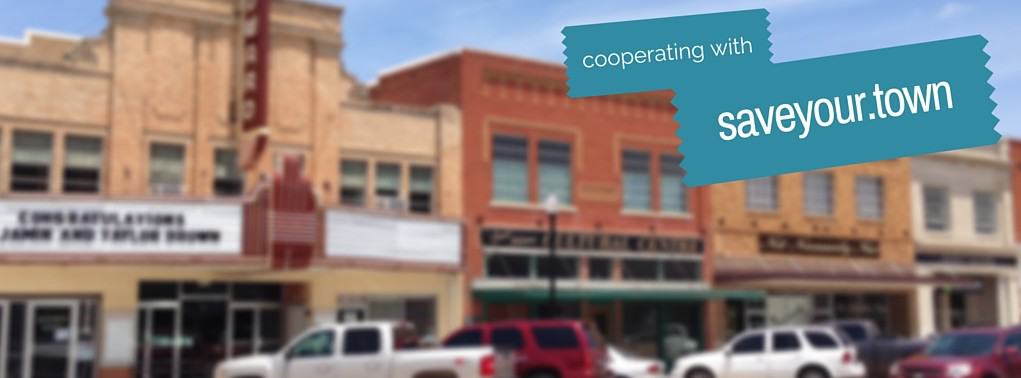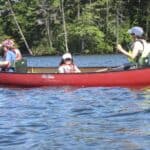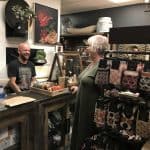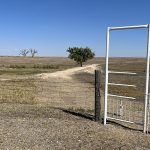It seems to me the only voices being heard in this world are from big companies, big cities and big government. The news blasted on my car radio as I drove across the prairie a few weeks ago, “the nation’s Gross Domestic Product growth has risen to a booming 4.1 during the second quarter of 2018 and consumer confidence is high as we go into mid-term elections.” I wanted to yell at the car radio, “What about the news that is affecting rural communities!”
That brief tantrum brought a question to mind for me. Where are the voices willing to explore and discuss issues facing rural communities?
There is an online news feed called The Daily Yonder that understands rural and puts our issues in perspective, but I’m guessing since it’s not one of the national news mediums, not many are looking at it. Jim Goodman, a writer for the Daily Yonder recently wrote, “In February, the U.S. Department of Agriculture (USDA) predicted 2018 crop profits would hit a 12-year low. Dairy farmers’ prices have fallen 30% in two years, while pork producers have seen a price drop of roughly $20 per head. Overall farm incomes are down nearly 50% from 2013. Long before the trade war began, I and many other farmers feared we were in a farm crisis as bad as that of the 1980s. Now we know it will be even worse.”
The success or despair of agriculture will ultimately trickle down to us all in small South Dakota towns. Yet, how we as individuals and the collective community choose to raise our voices and prepare for those times of success or despair equates to whether our communities will thrive or die.
The small towns that are successful in South Dakota are focused on creating a new rural – a vision and strategy to thrive. These small towns and regions are exploring the strategic possibilities of community and economic development. Here are a few strategic ways communities of the new rural are choosing to thrive:
Initiating Community Conversations – Because of the culture and leadership structures in small towns, we often lack a voice to raise difficult and challenging questions on issues facing our communities. With little cost but plenty of leadership, thriving rural communities are hosting community gatherings to talk about the issues, surveying residents, commissioning housing studies, empowering citizens to take action, and elevating other issues of priority.
Educating the community – Local community and economic development organizations are providing easy-to-understand public education on issues that are at the forefront, such as housing, business, leadership, daycare, quality of life amenities and more. By presenting and sharing quality data, information, and even opinions this puts communities and their residents in a better position to understand and address complex issues in a local context.
Building local infrastructure – This strategy is not about sewer, water and streets even though we know that type of infrastructure is necessary. Thriving communities make a lasting commitment to developing an infrastructure of community engagement (citizen leadership) and economic development (leadership focused on business development, people attraction and quality of place). For example, a community that is committed to building local infrastructure may see value in employing a community and economic development specialist that will wake up each day ready to engage residents, build outside connections, leverage resources, and keep their finger on the pulse of the community and region.
Grow local voices – Thriving communities empower residents and local leadership to speak out for their community to elected officials, resource providers, funders, neighboring towns, national platforms and, most of all, each other. This strategy begins through community engagement, education, connections and regular communication. Growing local voices allows a thriving community to solve a wide range of issues that may be affecting them, such as broadband access or the ability to maintain healthcare.
Are you willing to raise your voice to explore and discuss issues facing rural communities? Creating a thriving rural community requires your voice, new strategies, and your commitment to creating change around the issues you are passionate about. I challenge you to find your voice and begin speaking up for rural. It starts in little ways, like sharing a new idea with a group at the coffee shop, saying thank you to a long-time community volunteer or sharing on social media #Iamrural. Go ahead, I give you permission to use your voice for the good of rural.











Paula, your “silent scream” about the urban bias of what I’ve called the myopic, metro media and other big-is-best institutions is absolutely on the mark.
I was the CEO of the National Association of Towns and Townships for several years. The organization represented grassroots local governments from more than 12,000 mostly small, rural communities around the Country.
It was a strong voice in Washington, DC for small town America, as was the National Rural Center (gone), the Congressional Rural Caucus (gone) and the National Rural Governments Coalition (gone).
Together, we made an effective case un Congress,
the White House and wuth the media that small town and rural American people, and their priorities, mattered, and that countryside communities and farm issues should be on the front burner.
Today, it seems morw abd more like “rural Americans” are being treated like cute, iconic Hallmark card images, that aren’t really important in the national scheme of things.
Barton,
Thank you for your response. You should be proud of your work in Washington DC and across the nation. None of that work should go unnoticed, yet I think people have begun to feel powerless in the past decade. I recently had a small group tell me, “When the negative voices in our community start to make noise it pulls us away from our purpose and each other… pretty soon people start believing what is the loudest rather than search for the facts.”
One by one I hope to empower more rural advocates to speak up, over the loud voices, and make a difference for the small towns that are the foundation of this great nation.